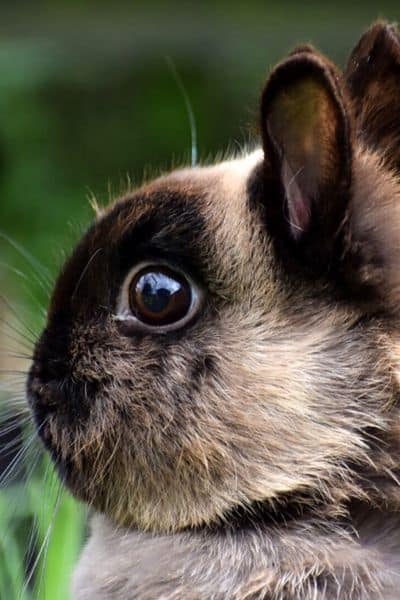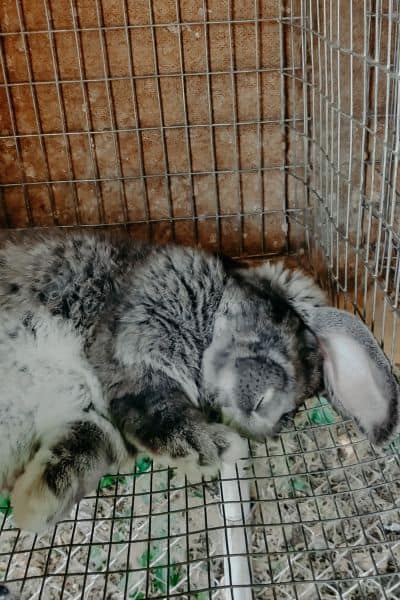Rabbit Raising And Showing Industry Words Dictionary
There are “words of the trade” for literally everything. So I am going to run through the words that you will see most often and give you the definition and possibly some more explanation if I think it will help.
ALBINO
A white rabbit with a pink eye.
Meaning the color is absent. So what some people don’t realize is they still could have an underlying color pattern. I had a REW that threw charlie and broken babies every time.
ARCH (ARC)
The gentle curvature of the spine, extending from the neck (or shoulders in some breeds) to the rear of the rabbit. Best observed by viewing the animal in side profile.
BALANCE
(1)Type-Shape or conformation. An orderly and pleasing arrangement of physical characteristics so as to present a harmonious appearance.
(2)Markings-Equal distribution of corresponding markings.
Free Farm Goal Planner!!!
➡️Get my proven system for choosing your farm goals so you don’t get burnt out.
BANDING
(1) A hair shaft having various colors. Normally associated with an agouti coat.
(2)An unbroken vertical circle of marking color extending around the body of the Harlequin.
BASE COLOR
The fur color next to the skin, under color.
BELL EARS
Ears that have large, heavy tips with a distinctive fall or lop to them.
BLOOM
The vitality and finish of a coat in good condition.
BLEMISH
Any defect or fault which detracts from the appearance.
BROKEN COLOR
Any recognized rabbit breed color in conjunction with white, and carrying the breed pattern. Keep in mind you will hear people just say “broken” There is nothing wrong with the animal. It just means that there is white as well as color on the rabbit.
To help you out visually this doe below is “broken” because she has white on the bottom and face. With her color (chestnut) on top.
BUCK
An intact male rabbit.
BUTTERFLY
A nose marking found on some breeds. The wing portions cover the whisker bed from lip to lip, with the body, or nose fork, extending up the center of the face.
CARRIAGE
(1)The manner in which a rabbit carries itself. The style or characteristic pose of a rabbit. (2) The style in which a rabbit carries its ears.
CHARLIE
An extremely lightly marked animal in marked breeds or Broken Groups. Usually having colored ears, light eye circles, and a Charlie Chaplin mustache like marking. Usually devoid of back and side markings.
CHOPPED
A condition of body type in which there is an abrupt and sharp vertical fall from the top of the hip to the tail. Not well filled out and rounded.
CROWN
A strong basal ridge of cartilage at the top of the head, forming the ear base on some lop eared breeds.
DENSITY
The property or quality of thick coat of fur. The number of fur fibers in a given area.
DEPTH
Measurement downward from the top line of the body to the lowest portion of the body.
DISQUALIFICATION or (DQ)
One or more defects, deformities, or blemishes which render a rabbit ineligible for competition or registration.
DOE
An intact female rabbit.
EAR LACING
A colored line of fur which outlines the sides and tips of the ears.
FAKING
Any deliberate change in the appearance of a rabbit which is done with the intent to deceive.
FINE COAT
A coat of fur too fine in texture, lacking body. Guard hairs weak and thin in structure. Lacking the proper amount of guard hairs.
FINISH
The desired degree of perfection in condition. Fully prime in coat, color, and flesh.
FLAT COAT
Fur lying too close to the body. Lacks spring or body as noted by touch. Usually a fine coat coupled with lack of density.
FLAT SHOULDERS
A trait that occurs when the top line over shoulders is noticeably parallel to the surface of the judging table. A lack of continuous arch from the neck over the shoulders.
FLYBACK
A coat of fur which flies back to its smooth normal position when stroked from the hindquarters to the shoulders.
FOREIGN COLOR
Any color of fur, nails, or eyes differing from that called for in the breed or variety.
GLOSSY
The reflection, luster, or brightness from a naturally healthy fur. A natural property of fur, sometimes improved by grooming.
GROUP
A broader classification than variety, usually applied to color pattern groupings.
My Rabbitry Must Haves
GUARD HAIR
The longer, coarser projecting hair of the coat, which offers protection to the undercoat. It furnishes wearing quality and resilience to the coat.
INTERMEDIATE
Terminology used in breeds having 6 showroom classes. A rabbit 6 to 8 months of age, or meeting weight requirements of the breed standard for that age group.
JUNIOR
A rabbit less than 6 months of age.
KINDLE
A term used to indicate the birth of young.
LOOSE COAT
Fur not set tightly in the skin. Slipping and breaking out.
LUSTER
Brightness and brilliance of fur.
MASK
Nose and muzzle color, which usually extends further up the face than a butterfly marking.
MOLT
The act of shedding or changing fur.
If it is a little bit of shedding that is normal. A molt is full-blown losing their hair and fast. The rabbit will often lose the hair as fast as they can grow it back in.
NOSEFORK
The body portion of the butterfly marking.
OFF COLORED
A departure from the desired color of fur, toenails, or eyes. (See Foreign Color.)
OPEN COAT
Coat lacking the ability to return to its natural position when stroked towards the head.
PEDIGREE
A written chart of the male and female ancestors, showing the date of birth, the parents, grandparents, and great grandparents. It may contain other information such as color, weight, etc.
PINCHED HINDQUARTERS
Hindquarters tapering towards the tail, giving a pinched appearance.
POINTS
The ears, tail, nose, front feet, rear feet, and leg markings in Californian, Himalayan, or Pointed Whites.
POOR COAT
Fur not in good condition due to molt, stain, ill health, or general poor quality due to genetic factors.
PRIME
An animal which exhibits ideal condition of flesh and coat.
RACY
Slim, trim, alert, and hare like in appearance. Long and slender in body and limbs.
RING COLOR
The color of the intermediate portion of a hair shaft in Agouti Patterned animals.
ROLLBACK
A gradual return of the fur to its normal position when stroked from the hindquarters to the shoulders. Slightly slower return than a fly back coat.
SENIOR
A rabbit 6 months of age or over in those breeds having 4 showroom classes. A rabbit 8 months of age or over in breeds having 6 showroom classes.
SHAPE
The general conformation of the rabbit’s overall appearance, as shown by body structure. Synonym for type.
SHEEN
A bright, natural luster attributed to the unique structure of the guard hair shaft. Having a glass-like transparent hair shell with the ability to reflect light. Sometimes used in error to describe fur condition on a normal fur.
SIDE TRIMMINGS
Wool appearing along the side of the head and face on some wooled breeds.
SILVERING
Fur having the appearance of a silvery gloss or luster. Caused by an abundance of silver white or silver tipped guard hairs, evenly distributed throughout the fur, so as to present an overall shiny or silvery appearance.
SLIPPED CROWN
Placement of the crown too far forward, or too far back, on the head of some lop breeds, causing the ear carriage to be misplaced.
SLIPPING COAT
A coat of fur that is shedding or molting.
SMUT
(1) A dark, sooty appearing surface color, usually formed by a large number of dark guard hairs. Found in many rabbits that carry the genetic factor of red.
(2) Pelt stain found in Himalayans, Californians, and Pointed Whites.
(3) The nose marking found on Himalayans.
SNIPEY
An elongated, narrow head, usually terminating in a pinched muzzle.
SURFACE COLOR
The top color of the fur, lying in its normal position.
TICKING
Longer guard hairs, throughout the coat, of a color distinct from the under wool or body fur.
TUCKED UP
(1) A trim appearance, with the flank and belly gathered in closely to form an arch when the rabbit is in a sitting position.
(2) A posing failure caused by pushing the hindquarters too far forward.
TYPE
Denotes the conformation. The shape or size of a particular part. The general physical makeup of the rabbit.
UNDERCUT HINDQUARTERS
Where the skeletal or muscular structure does not fill the lower hindquarters.
VARIETY
A division within a breed or group. Color determines the variety.
WHITE TOENAIL
A nail without pigmentation. Showing only the pink cast of the blood vessel.


![How To Stop Rabbits Fighting [Signs Of Aggressive Behavior]](https://leah-lynch.com/wp-content/uploads/blog-post-header-29-1.jpg)


